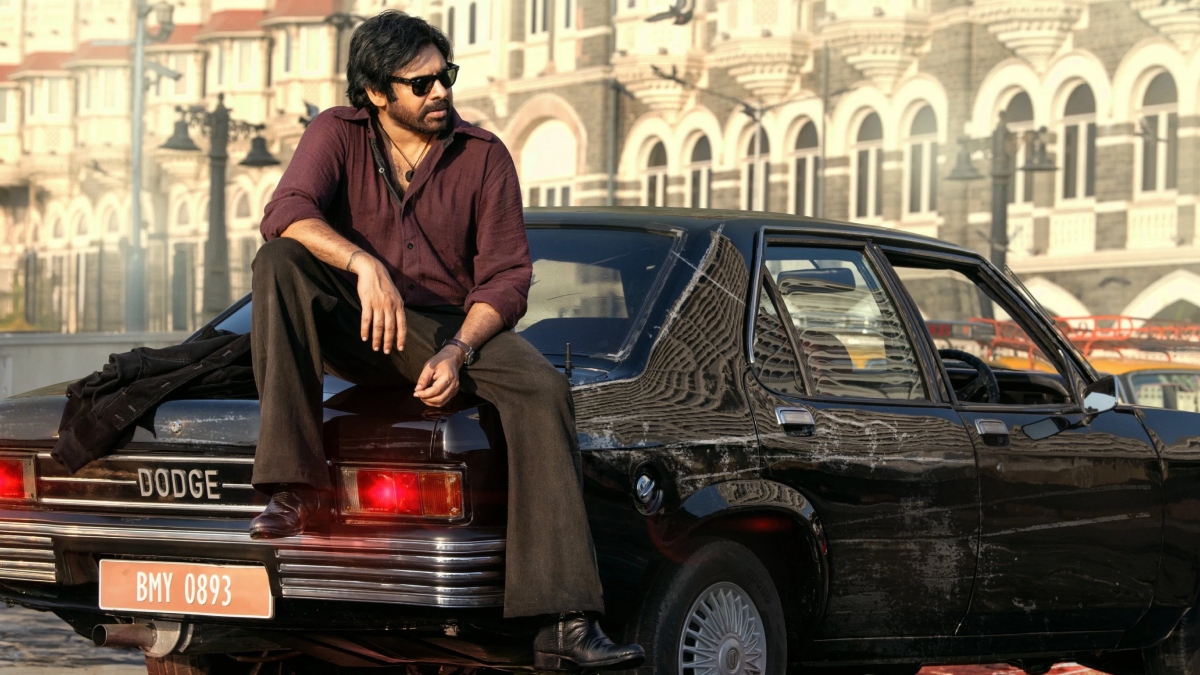Sujeeth’s They Call Him OG (2025) is a grand celebration of cinematic heroism — the kind of myth-making that erases the boundary between mortal and god. Beneath the fanfare, slow-motion swagger, and gunpowder-soaked glory, however, lies a story steeped in loyalty, legacy, and misunderstood sacrifice. Its emotional core, though often buried under layers of stylized violence, beats around a single haunting question: What becomes of a man who chooses duty over destiny? At its essence, They Call Him OG isn’t a tale of power or vengeance, but of how heroism itself can be both a gift and a curse — especially when memory turns into the sharpest weapon of all.
Spoilers Ahead
They Call Him OG (2025) Plot Summary & Movie Synopsis:
Gambheera, also known as Oruchi Genshin in Japan, grows up in a samurai monastery, where he is disciplined, righteous, and fiercely loyal to his clan. Growing up during a time of war and loss, he inherits his father’s creed: honor over life. But when the Yakuza, led by the ruthless Kazao, destroy his clan, the world of the samurai falls apart. Gambheera strikes out to seek revenge, but only for a moment. He flees Japan with the blood of his brothers on his hands and is uncertain if redemption or death awaits him.
In India, he finds sanctuary underneath a compassionate businessman named Satya Dada, who has dreams of building a port in Bombay. The two men have mutual respect, which allows them to rebuild their lives. For Gambheera, this new life is more than a life; it is his vow of loyalty to atone for the violence that he has escaped. However, peace is as vulnerable as memory.
Who Was Gambheera, and Why Did He Leave Japan?
Gambheera’s past defines his entire existence. He isn’t merely a warrior, he’s a ghost of history, a man trained to kill but yearning to protect. When the Yakuza massacre his samurai brethren, Gambheera’s act of vengeance (killing Kazao, the Yakuza heir) turns him into both a legend and a fugitive. His escape to India aboard Satya Dada’s ship is less a flight from danger and more a search for rebirth.
Sujeeth uses this backstory as a moral paradox. Gambheera’s silence becomes both his penance and his prison. By saving Satya Dada’s life, he finds a new purpose, but the shadows of Japan never leave him. Each of his actions in Bombay is an echo of his past life, each oath a continuation of his samurai code.
Why Did Jimmy Kill Satya Dada’s Son?
Jimmy’s act of murder is the first domino in a chain of chaos. As the son of the influential Mirajkar, a corrupt politician, Jimmy embodies reckless entitlement. His killing of Pardhu, Satya Dada’s son, isn’t a crime of passion but of power. He sees himself above consequence, blind to the storm his arrogance will unleash.
Jimmy’s connection to foreign arms dealers reveals how the real enemy in “They Call Him OG” isn’t one man but a network of greed and terror. His killing of Pardhu is a statement: the moral world that Satya and Gambheera built is already crumbling. This moment reawakens Gambheera’s inner warrior, not out of vengeance, but out of necessity. For the first time in years, the samurai inside him resurfaces, forced to protect the last traces of a world built on honor.
Why Did Arjun Want to Kill Gambheera?
This is where “They Call Him OG” finds its emotional heartbeat. Arjun, Pardhu’s son, grows up believing Gambheera murdered his father. The lie, told to protect his innocence, turns into the defining wound of his life. In truth, Arjun’s father, Chakri, died in a tragic accident. When Geetha, Chakri’s wife, tried to stop him from joining Jimmy’s drug trade, their confrontation spiraled out of control. The young Arjun, attempting to help, accidentally fired the gun that killed his father. To shield the boy, Gambheera took the blame, embracing infamy so that Arjun could grow up without guilt.

Also Read: 14 Great Tamil Movies You Can Stream on Netflix Right Now
Years later, Arjun’s desire for revenge becomes poetic irony. The man he wants dead is the same one who protected his childhood from trauma. When the truth finally emerges, Arjun’s hatred collapses into remorse. His arc transforms “They Call Him OG” from an action spectacle into a meditation on misunderstood sacrifice. Gambheera’s choice to bear another’s sin, to be hated for the sake of love, defines the film’s moral center.
Why Did Gambheera Disappear to Nasik?
Gambheera’s self-imposed exile in Nasik is an act of renunciation, a warrior stepping away from bloodshed to preserve peace. Whether driven by guilt or love (for Kanmani), his retreat symbolizes an attempt to live as a man, not a myth. But myths, by nature, refuse to die. His silence becomes both a curse and a shield. To Satya Dada, his absence is betrayal. To Arjun, it’s cowardice; to Kanmani, it’s devotion. Gambheera’s withdrawal isn’t weakness; it’s restraint. The samurai in him knows that vengeance begets vengeance, and until provoked, he will not raise his sword again.
Was Gambheera Able to Stop Omi?
Omi, the older brother of Jimmy and an international arms trafficker linked to global crime syndicates, returns to reclaim his empire. His motivations are not political but rather personal. He seeks vengeance because of the injury to his pride due to his failures. When Satya Dada refuses to give Omi the RDX dissociated from him, Omi turns cruel and murders Kanmani coldly.
This triggers the breaking of Gambheera’s self-restraint. The warrior is reborn and emerges from exile and embraces the calling of being OG, the Original Gambheer, the man forged of honor, but now a man worried of vengeance. The climactic battle of Gambheera against Omi becomes less a battle of strength but rather a battle of ideology – one man kills for power while the other fights for peace.
Gambheera defeats Omi and regains his vow and dignity of silence. The explosion of Omi’s defeat feels symbolic. It recalls the purging of violence that haunts the film since its first act. Yet just before Omi’s denouement, his final word of vengeance suggests that his spirit or syndicate will return. Sujeeth leaves this open, introducing Yakimura Shinzo, introducing Gambheera as Oruchi Genshin, the man who killed his son, Kazao. The cycle of vendetta seems unending.
They Call Him OG (2025) Movie Ending Explained:
What Does Gambheera’s Journey Mean?
The ending of “They Call Him OG” is both triumphant and tragic. Gambheera’s victory is hollow, not because he loses his loved ones, but because he realizes that violence, once begun, can never truly end. Each act of retribution births another ghost from the past. By embracing his old name, Oruchi Genshin, Gambheera finally accepts that he cannot escape his identity. The samurai, the fugitive, the savior, they are all the same man. His myth has consumed his humanity, and yet, through that myth, he preserves others’ peace.
When Arjun learns the truth, his forgiveness becomes the film’s emotional release. Gambheera’s act of silent atonement finds meaning only when the next generation understands the weight of sacrifice. Beneath its stylized violence and mythic grandeur, “They Call Him OG” is about how the process of misunderstanding causes legends to be born, and how the truth is often buried under a veneer of heroism, and in that truth is something distinctly human rather than divine.
Gambheera embodies the eternal warrior, not the killer but the resister, until love, loss, and loyalty convince him to pick up arms again. His arc is the eternal war of peace versus pride, duty versus desire. In celebrating a man like Gambheera, Sujeeth’s film interrogates the cost of myth-making: to the degree that a hero becomes a symbol, is he once again human? Ultimately, “They Call Him OG” is not merely about revenge or redemption. It’s about how even gods of war crave absolution, and sometimes the greatest courage is found in silence.







